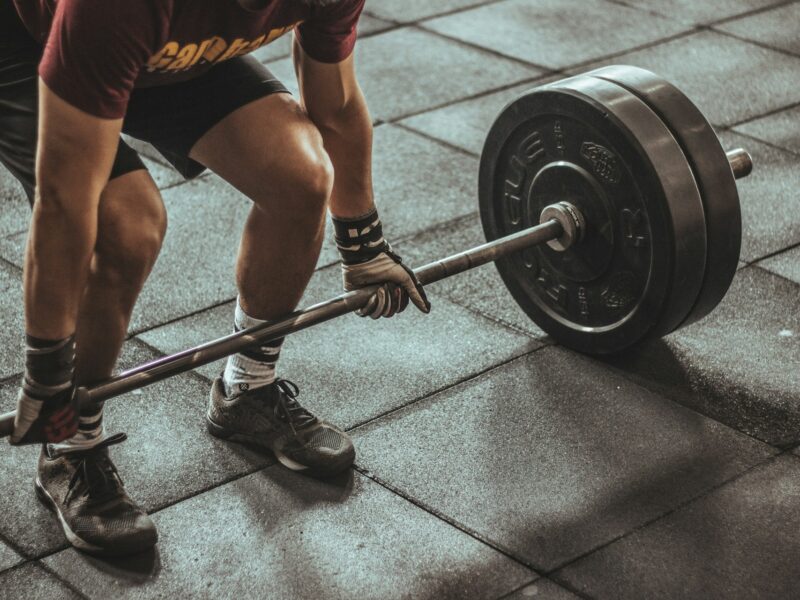Atlanta, GA, has a vibrant fitness scene, with countless gyms and studios offering programs for every fitness level. For many, starting the fitness journey is straightforward: follow a beginner plan, learn some basic exercises, and build a habit. However, moving beyond that beginner phase can feel challenging. Whether you’re aiming to build strength, increase endurance, or improve athletic skills, advancing in your fitness routine requires a strategic approach.
Understanding the Basics
Before diving into more advanced workouts, it’s crucial to build a strong foundation. Many beginners focus on learning proper form and understanding basic movements like squats, lunges, push-ups, and other fundamental exercises. These movements are important because they lay the groundwork for more complex exercises. Developing a solid foundation reduces the risk of injury and also makes it easier to handle increased intensity later on.
At this stage, consistency is key. Sticking to a routine helps your body adapt and build strength gradually. The goal is to develop muscle memory, improve balance, and build endurance. Beginners should also focus on gradually increasing the intensity of their workouts, either by adding more weight, increasing repetitions, or incorporating short bursts of cardio exercises. This steady progression prepares the body for more advanced levels of training.
Incorporating Strength Training and Functional Movements
As you progress beyond the beginner stage, strength training and functional movements become increasingly important. These types of exercises are essential for building the muscle strength needed to handle more intense workouts. Incorporating exercises like deadlifts, bench presses, and overhead presses can help develop the strength and stability necessary for advanced fitness levels. Functional movements such as kettlebell swings or squats also enhance overall athletic performance by working multiple muscle groups.
If you’re looking for expert guidance on these techniques, X3 Sports is a gym in Atlanta that offers a variety of classes and programs designed to take your training to the next level. Their professional coaches provide tailored plans that focus on proper form, strength-building, and functional movement techniques.
Including functional movements in your routine boosts physical strength and improves flexibility and balance. Exercises like lunges, planks, and resistance band routines target muscles used in everyday activities, helping you move with greater ease and stability. This approach builds a well-rounded fitness foundation, making it easier to handle more challenging exercises later on.
The owner of Fitness Avenue remarks, “As you progress to advanced fitness levels, integrating functional movements and supplementing your routines with vests for strength and endurance can significantly enhance both power and overall athletic performance.”
Introducing High-Intensity Interval Training (HIIT) and Advanced Cardio
As you progress in your fitness journey, adding intensity is essential. High-Intensity Interval Training (HIIT) is an effective method for advancing your fitness level. HIIT involves short bursts of intense activity followed by periods of rest or low-intensity exercises. This approach pushes your body beyond its comfort zone, leading to greater endurance and calorie burn in less time.
To start incorporating HIIT, choose exercises like sprint intervals, jump squats, or cycling sprints. Begin with short intervals—20 to 30 seconds of intense effort—followed by equal rest periods. Over time, you can increase the intensity or length of the intervals as your fitness improves. HIIT is highly effective because it challenges both your cardiovascular and muscular systems, helping you to build strength and endurance simultaneously.
Along with HIIT, advanced cardio exercises are vital in transitioning to a higher fitness level. Exercises like sprinting, circuit training, and plyometric drills increase speed, power, and overall performance. Advanced cardio sessions also keep your workouts varied and exciting, reducing the chance of hitting a plateau. By integrating these exercises, you challenge your body in new ways, promoting continuous improvement in strength, agility, and endurance.
Adding Variety with Specialized Classes and Programs
Variety is important when progressing in fitness. Sticking to the same routine for too long can lead to plateaus, which make it difficult to see further progress. To keep improving, try incorporating specialized classes and programs into your routine. These options provide the opportunity to learn new skills and techniques that enhance overall fitness.
Kickboxing, martial arts, and other strength and conditioning programs are excellent ways to add variety and intensity to your workouts. Classes like these offer full-body training that combines strength, cardio, and flexibility exercises. For instance, kickboxing helps improve cardiovascular health, builds muscle, and improves coordination. Martial arts, on the other hand, boost flexibility, balance, and mental focus, which are essential for advanced training. These classes often come with expert coaching, so you receive the guidance needed to master new skills safely.
When choosing a gym or fitness center, look for one that offers a diverse range of advanced classes. Make sure to pick a place with experienced trainers who can adjust programs according to your fitness level and goals. Programs tailored to your specific needs can accelerate your progress and help you avoid injury by providing professional advice on form and technique.
Tracking Progress and Making Adjustments
Monitoring your progress is a vital part of transitioning to advanced fitness training. Keeping a fitness journal, using a tracking app, or working with a personal trainer are great ways to stay on top of your development. Documenting your workouts, noting your strengths, and tracking what needs improvement gives you a clearer picture of your journey. It also keeps you motivated by showing how far you’ve come.
Regular self-assessment allows you to identify any areas where you may need to focus more. If you notice you’re not improving in strength as expected, it might be time to adjust your routine to include more strength-building exercises. Alternatively, if you feel your endurance isn’t increasing, adding more advanced cardio sessions might be beneficial. The key is to adjust as you progress to keep your body challenged and avoid stagnation.
Progressing from beginner to advanced fitness training is an ongoing process that requires dedication, consistency, and a willingness to try new things. By setting clear goals, incorporating advanced exercises, and adding variety through specialized programs, you can steadily elevate your fitness level. Staying committed, tracking your progress, and adjusting your routine as needed will keep you moving forward on your journey to improved strength, endurance, and overall health.
Want to unlock greater wellness?
Listen to our friends over at the Wellness + Wisdom Podcast to unlock your best self with Drew Canole of Organifi:








 Aging and Lung Health: How to Maintain Strong Lungs Over Time
Aging and Lung Health: How to Maintain Strong Lungs Over Time